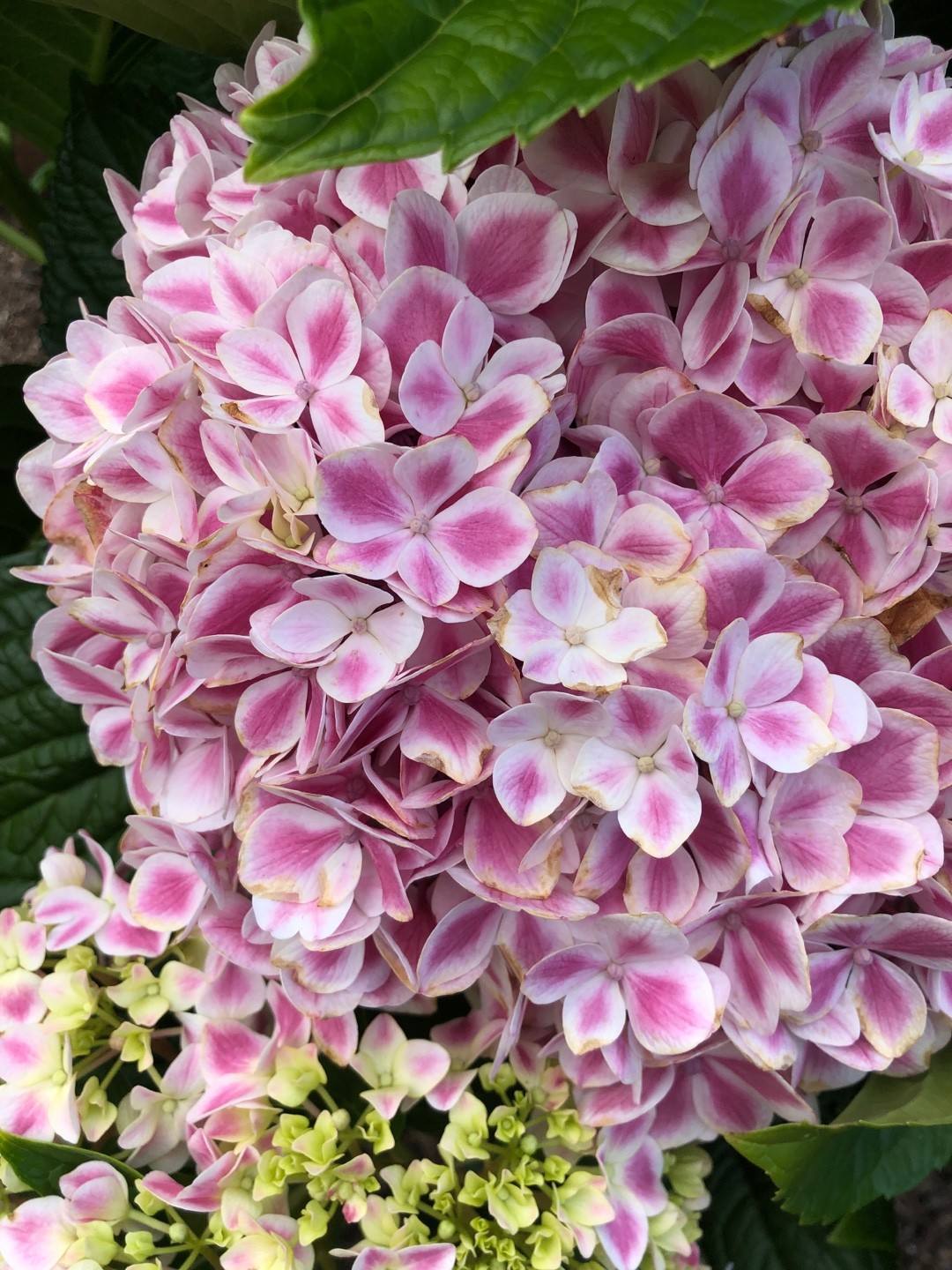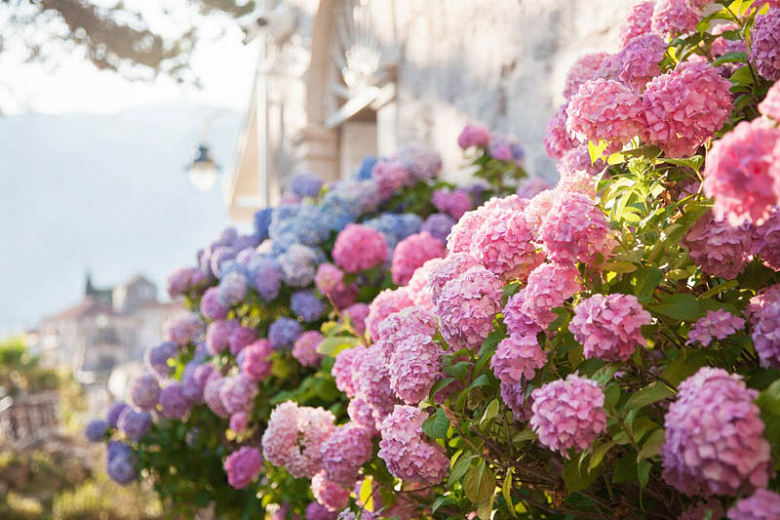The Peppermint Hydrangea: A Sweet And Scented Addition To Your Garden
The Peppermint Hydrangea: A Sweet and Scented Addition to Your Garden
Hydrangeas are a popular choice for gardens, thanks to their beautiful blooms and relatively easy care. But what if you could find a hydrangea that also had a sweet, peppermint scent?
Introducing the peppermint hydrangea (Hydrangea arborescens 'Peppermint'). This unique variety of hydrangea is known for its strong peppermint fragrance, which is especially noticeable in the evening. The flowers are also a beautiful shade of blue, which makes them a striking addition to any garden.
Peppermint hydrangeas are relatively easy to care for. They prefer full sun to partial shade and moist, well-drained soil. They are hardy in USDA zones 3-9, so they can be grown in most parts of the country.
To encourage blooms, fertilize peppermint hydrangeas in the spring with a balanced fertilizer. You can also prune them in the spring to shape them and remove any dead or damaged branches.
Peppermint hydrangeas are a great choice for gardens of all sizes. They can be grown as a standalone specimen plant, or they can be planted in groups to create a hedge or border. They are also a good choice for containers, so you can enjoy their sweet scent even if you don't have a lot of space.
If you are looking for a beautiful and fragrant addition to your garden, the peppermint hydrangea is a great option. With its easy care requirements and striking appearance, this unique variety of hydrangea is sure to become a favorite.
Main Content
Here are some additional information about peppermint hydrangeas:
- Bloom time: Peppermint hydrangeas typically bloom in late spring to early summer. The flowers can last for several weeks.
- Size: Peppermint hydrangeas can grow to be 6-8 feet tall and wide.
- Hardiness: Peppermint hydrangeas are hardy in USDA zones 3-9.
- Pests and diseases: Peppermint hydrangeas are relatively resistant to pests and diseases. However, they can be susceptible to powdery mildew, especially in humid climates.
- Propagation: Peppermint hydrangeas can be propagated by cuttings or division.
Care and maintenance:
- Watering: Peppermint hydrangeas need regular watering, especially during the hot summer months. The soil should be kept moist, but not soggy.
- Fertilizing: Peppermint hydrangeas should be fertilized in the spring with a balanced fertilizer. A fertilizer high in phosphorus will help to promote blooms.
- Pruning: Peppermint hydrangeas can be pruned in the spring to shape them and remove any dead or damaged branches. They can also be pruned to encourage more blooms.
Where to buy:
Peppermint hydrangeas can be purchased from most garden centers and online retailers.
Conclusion
The peppermint hydrangea is a beautiful and fragrant addition to any garden. With its easy care requirements and striking appearance, this unique variety of hydrangea is sure to become a favorite. If you are looking for a hydrangea that will add both beauty and fragrance to your garden, the peppermint hydrangea is a great option.
If you're looking for more information about peppermint hydrangea, I recommend visiting . This website has a wealth of information on the plant, including its history, care requirements, and potential uses. You can also find photos and videos of peppermint hydrangeas, which can help you to visualize the plant and its beauty.
In addition to its informative articles, also offers a forum where you can connect with other peppermint hydrangea enthusiasts. This is a great place to ask questions, share tips, and get advice from experienced gardeners.
Whether you're a beginner or a seasoned pro, is the perfect resource for learning more about peppermint hydrangea. So what are you waiting for? Visit today!
FAQ of peppermint hydrangea
Question 1: What is a peppermint hydrangea?
A peppermint hydrangea is a type of hydrangea that produces flowers that are a light pink or blue color. The flowers have a slightly minty scent, which is where the plant gets its name. Peppermint hydrangeas are relatively easy to care for and can be grown in a variety of climates.
Question 2: What are the best conditions for growing peppermint hydrangeas?
Peppermint hydrangeas prefer full sun to partial shade and moist, well-drained soil. They are hardy in USDA zones 4-9.
Question 3: How do I care for a peppermint hydrangea?
Peppermint hydrangeas need to be watered regularly, especially during hot, dry weather. They should also be fertilized once a month during the growing season. In the fall, the flowers should be trimmed back to about 6 inches tall.
Question 4: How do I propagate a peppermint hydrangea?
Peppermint hydrangeas can be propagated by taking cuttings in the spring or summer. To do this, cut a 4-6 inch piece of stem from the plant and remove the leaves from the bottom half. Dip the cut end of the stem in rooting hormone and plant it in a pot of moist potting mix. Keep the pot in a warm, shady location and the cuttings should root in about 4-6 weeks.
Question 5: What are some common pests and diseases that affect peppermint hydrangeas?
Peppermint hydrangeas are susceptible to a few common pests and diseases, including aphids, scale, and powdery mildew. Aphids can be controlled by using insecticidal soap or neem oil. Scale can be controlled by using horticultural oil. Powdery mildew can be controlled by using a fungicide.
Image of peppermint hydrangea
5 different images of "peppermint hydrangea" from Pinterest:
- Image 1: A full bush of peppermint hydrangea in bloom. The flowers are a light pink color with a white center.

- Image 2: A close-up of a single peppermint hydrangea flower. The petals are a delicate pink color with a white center.

- Image 3: A peppermint hydrangea bush in the shade. The flowers are a darker pink color than in full sun.
- Image 4: A peppermint hydrangea bush with butterflies. The butterflies are feeding on the nectar of the flowers.
- Image 5: A peppermint hydrangea bush in a vase. The flowers are arranged in a vase with other flowers.


Post a Comment for "The Peppermint Hydrangea: A Sweet And Scented Addition To Your Garden"